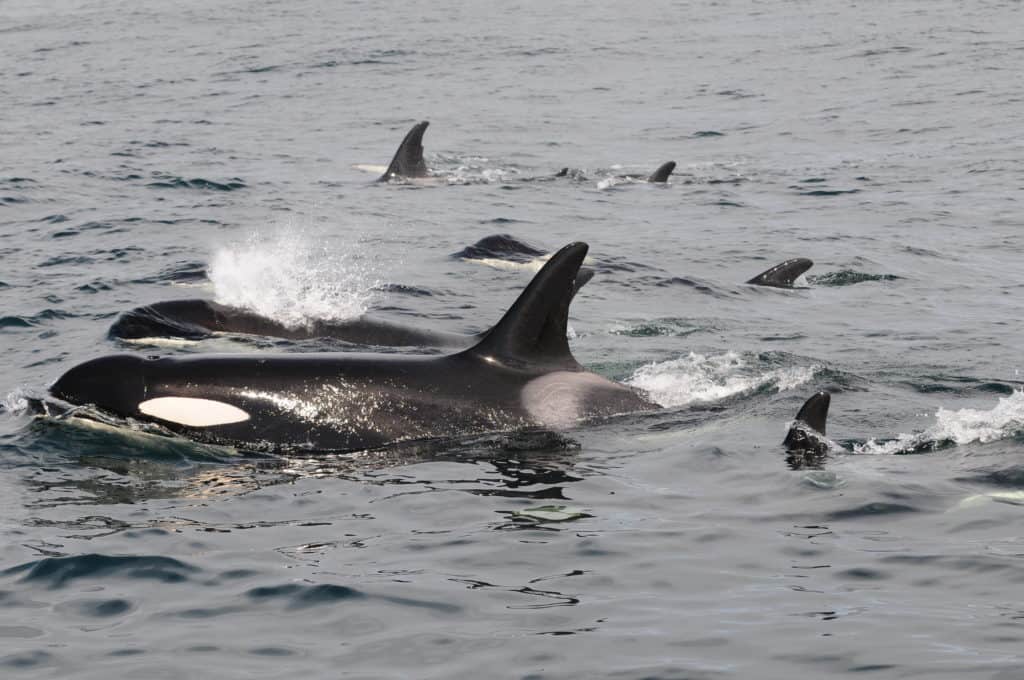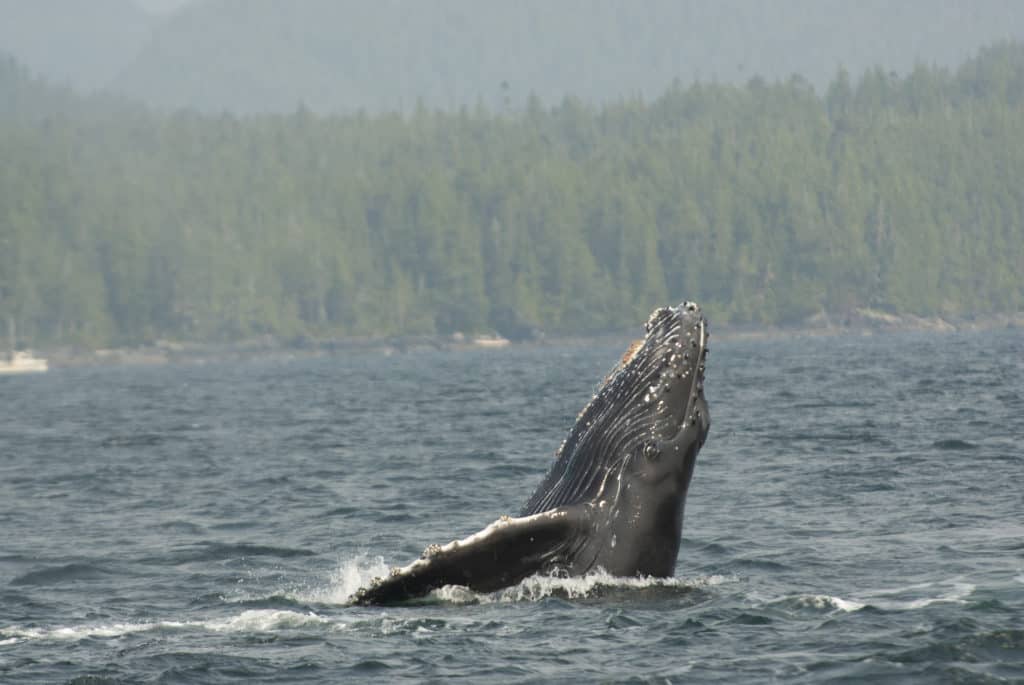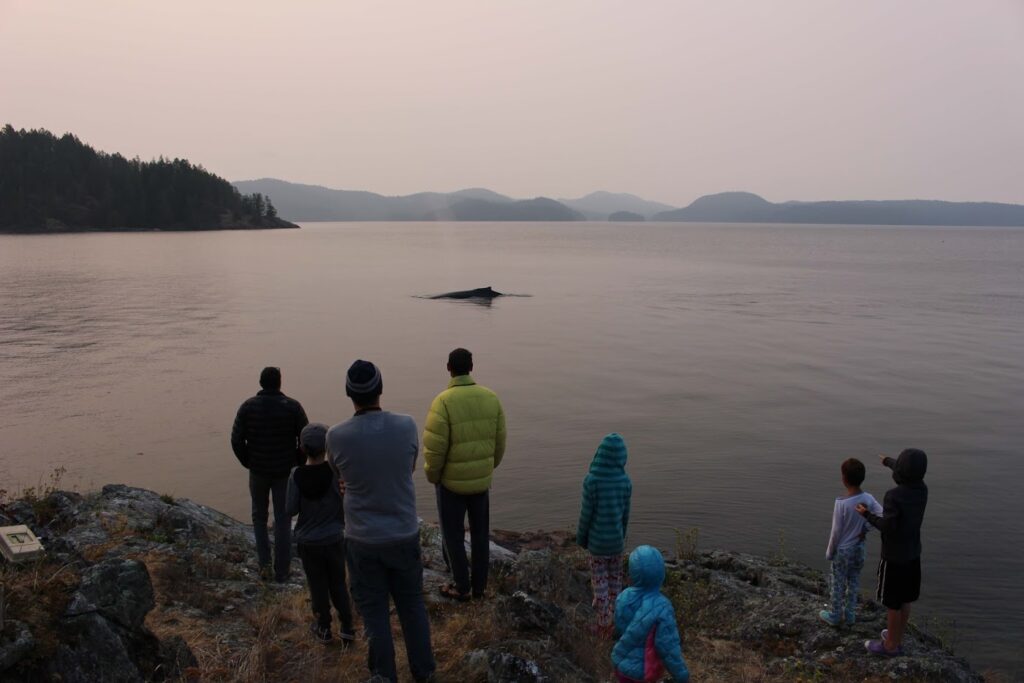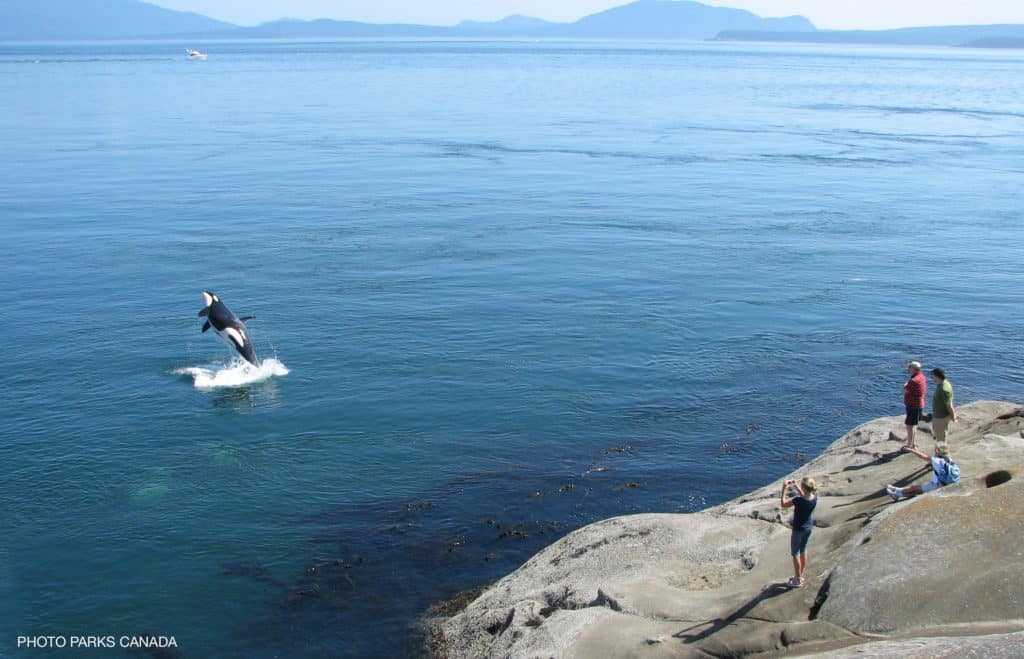Whale Report Alert System FAQ
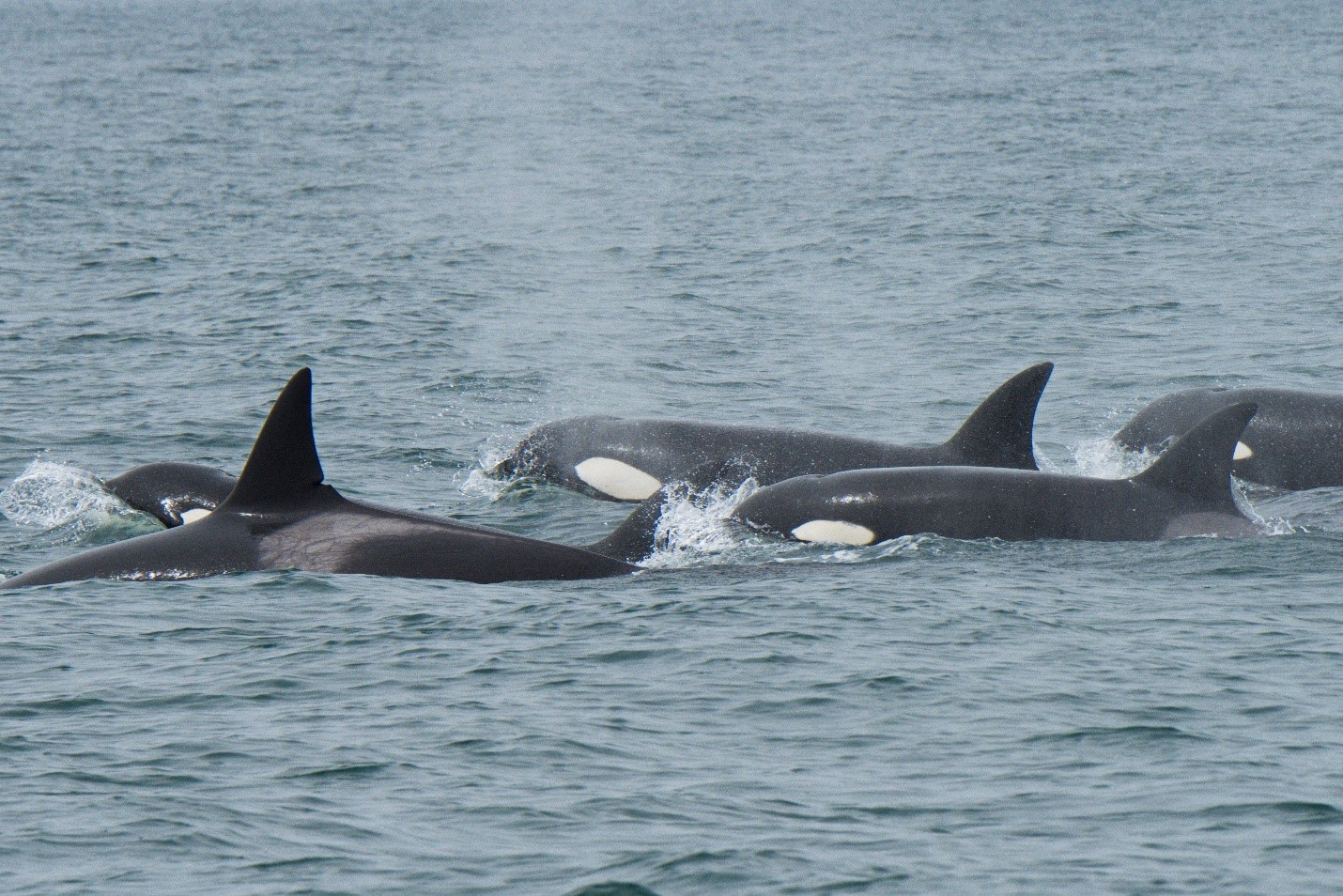
Whale Report is the name of our Ocean Wise app. The Whale Report app can be used to report whale sightings. Other functions include being able to view regional sightings with a 24-hour delay and learn more about whales through in-app resources.
The Whale Report Alert System (WRAS) sends real-time alerts of whale presence to mariners in order to reduce vessel strike or disturbance. It is a tool accessed within the Whale Report app and is available to commercial mariners and access is authorized by Ocean Wise staff. The WRAS sends alerts through the Whale Report app, official government channels, or through connections to navigation software.
If you’re a mariner and want to apply for access, download the Whale Report app and go to the “My Alerts” page, or sign up in the desktop app here.
The Whale Report Alert System (WRAS) is a cutting-edge conservation tool designed to protect whales from ship strikes and disturbance. The WRAS receives real-time data from the Whale Report app via citizen sightings and from partner whale detection platforms, including integrations with hydrophones and infrared cameras (view the WRAS Webpage to find out more about our data providers). This information is disseminated to mariners in the vicinity of whales via alerts. The goal of the WRAS is to enable mariners to take mitigation measures (e.g. slowing down, changing course, increasing vigilance) to help reduce acoustic and physical disturbance to vulnerable whale species.
By reporting a sighting using the Ocean Wise Whale Report app, your report is automatically sent to the WRAS in areas the WRAS is active. Alerts are then privately sent to registered mariners within 10 nautical miles (~18.5 km or 11.5 miles) of the sighted animals (via SMS, app notifications, email, the WRAS Desktop Application, navigation system, or vessel operation centers). The alert will notify them of the location of the sighting, the species, group size, and direction of travel to inform their decision-making when piloting their vessel. When alerted ships slow down or divert course in the vicinity of whales, it reduces the risk of ship strike and disturbance.

No. WRAS is not available for personal use, to whale watching vessels, or ecotourism organizations to avoid encouraging additional traffic around whales.
Everyone can access the Whale Report app. Access to the WRAS, however, is restricted to commercial mariners aboard large shipping or passenger vessels (ferries, freighters, cargo ships), marine mammal observers working on marine construction projects, government agencies tasked with enforcing boater regulations, and Indigenous communities or governments (i.e. marine guardians, conservation, research initiatives). If you fall into one of these categories and would like to access the WRAS, click “Request Access” on our My Alerts page on the Whale Report app or sign up on our desktop app here. Or, if you’re not sure, feel free to email [email protected] and inquire.
Any representative of an Indigenous government or community (i.e. marine guardians, conservation, research initiatives) can access the WRAS. However, the WRAS is not for personal use. Indigenous communities or governments can also access historical data. If you are interested, please email [email protected] for more details.
The Whale Report Alert System is currently active in the waters of British Columbia, Washington State, and south-eastern Alaska. We are in the process of expanding the WRAS to other geographies. If you are located outside of this area and are interested in learning how the WRAS can be implemented in your local waters, please email [email protected].
Yes! You can report sightings on the web through the Whale Report web portal. The web version of Whale Report works on desktop/laptops, as well as mobile and tablet browsers. This is perfect if you cannot use your phone on the bridge of a vessel, would prefer to report through bridge computers/operations centers, or if you would prefer not to download the app.
Alternatively, you can report to your local sightings network (for example, Orca Network in Washington State). Reporting to local community WhatsApp or Facebook sightings groups is a great way to inform your community about opportunities to view whales. However, these reports are not connected to, nor routinely monitored by many conservation organizations, meaning any reports communicated via social media or instant messaging platforms will not go to the WRAS alerting mariners, or are not routinely monitored by Ocean Wise. If you’re unsure, check first for a local sightings network, or local government advice on reporting whales.
Yes! Sightings in Whale Report are saved offline and uploaded once you regain connection.
No – the WRAS has been designed to eliminate delays in getting crucial whale location information to professional mariners on the water. The automatic verification process takes a matter of seconds so that alerts can be sent as soon as possible. Mariners should receive an alert within 5 minutes of a sighting being submitted.
No – there are four factors that determine whether a WRAS alert is sent:
- Timing – Sightings must be reported in real-time to be eligible to generate an alert. This ensures that professional mariners are receiving the most current whale locations to factor into their decision-making when piloting a vessel.
- Species ID confidence – Only sightings reported with high confidence in species identification (“Certain” or “probable”) will generate WRAS alerts. If you are sure you saw a whale, but are uncertain of the species, there is an “unidentified whale” category in Whale Report that can be reported with high species ID confidence to ensure a WRAS alert will be generated.
- Species – The biological characteristics and behaviour of large whale species mean that they are most vulnerable to ship strike and disturbance due to large commercial vessels. Sightings of baleen whales (including humpback whales, fin whales, blue whales, Minke whales, and grey whales) and killer whales that meet all other criteria will generate alerts. Other rare large whale species (e.g. beaked whales, north Pacific right whales) or whales that can’t be identified to species will also generate alerts. Small cetaceans (e.g. harbour porpoise, pacific white-sided dolphins) will not generate WRAS alerts, but these sightings are still valuable for conservation-based research concerning these species!
- Mariners nearby – Not all sightings that meet the above criteria are received by mariners as an alert – a WRAS-enabled vessel must pass within 10 nautical miles of the sighting location for an alert to be sent.
We have designed the WRAS so different species generate alerts that are sent for different time durations based on species behavior. For example, fin whales stay in one spot for longer, generating longer alerts. Killer whales generally move quicker through areas so the alert will be sent for a shorter duration. If a whale remains in an area, we recommend you report around every 3 hours to make sure mariners are aware the whale is still in the area (if not feasible, once every 24 hours is great).
We also recommend that you report a whale as soon as possible to ensure that a real-time alert is sent to large vessels through the WRAS.
Yes – the WRAS uses whale detections from infrared cameras, hydrophones, and citizen sightings through partner data providers. See the WRAS Webpage for more information on our partner data providers.
Public users of the Whale Report app will be able to see sightings with a 24-hour delay. Access to real-time sightings is restricted to commercial mariners aboard large shipping vessels, marine mammal observers working on marine construction projects, government agencies tasked with enforcing boater regulations, and Indigenous communities or governments (i.e. marine guardians, conservation, and research initiatives).
Many regions have local Facebook groups, run by community members, where people post their whale sightings in real time.
Your real time sighting reports create safer waters for whales by reducing the risk of ship strike and disturbance.
Your reports are also critical for monitoring the distribution and abundance of whales – information which is key to understanding their population status and the threats they face. Sightings reported by Ocean Wise’s diverse and dedicated network of coastal community members are quality checked by Ocean Wise staff and entered into the Ocean Wise Sightings Network database. This database is the primary source of information on the occurrence of whales in British Columbia’s waters. Subsets of the data it contains have supported hundreds of conservation-based research projects.
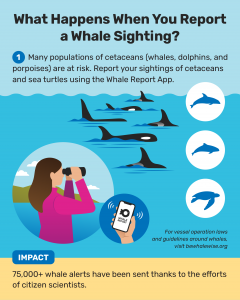
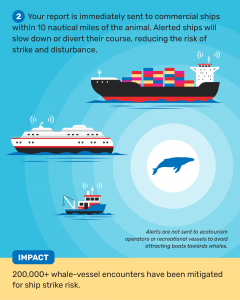
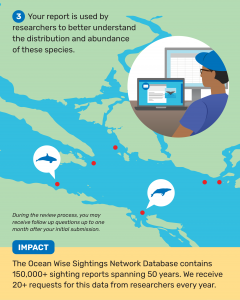
Personal information is stored in the Ocean Wise Sightings Network database to help our scientists contact you if we need more information on a sighting. Sensitive information is not shared outside of Ocean Wise.
Data may be used to inform regulatory authorities of where whales have been reported, or where to focus enforcement activities. However, data will not serve as evidence for enforcing approach distance regulations or other violations requiring precise location data.
